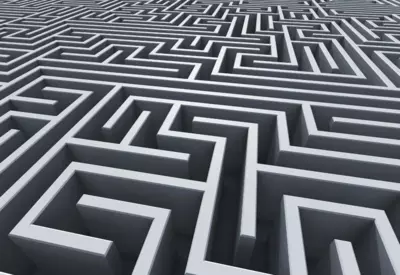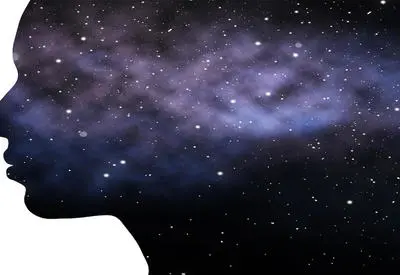Psychoanalyst Carl Jung coined or discovered the concept of the collective unconscious about a century ago. The idea is that humans have a shared hive mind. In the collective unconscious there are archetypes (like that of the hero or the Great Mother) and myths (things like religious myths or “myths of progress”) and other shared unconscious material.Now, in the modern world, what was once a collective unconscious, the Internet is making people aware. Sharif Abdulnour writes.
In a seemingly endless digital universe, every click and keystroke tells a story, contributing to the ever-expanding narrative that is the essence of our collective consciousness. This virtual environment is an intricate mosaic of human interactions and a living testament to Carl Jung’s prescient understanding of the collective unconscious—the shared repository of archetypes and experiences beneath the surface of our individual consciousness.
As we navigate the depths of the digital ocean, it becomes increasingly apparent that we are not just passive spectators on a journey through cyberspace; we are active participants in profound shifts in consciousness. The Internet, with its instant connectivity, has become the most tangible manifestation of the Jungian collective unconscious that humanity has ever known.It is within this vast web that our personal and universal experiences merge, the esoteric becomes tangible, and the once invisible threads that weave our collective psyche become visible
___
Once an abstract psychological concept, the collective unconscious now finds explicit form in 21st century digital narratives.
___
Jungian Collective Unconscious: The Tapestry of Shared Archetypes
Carl Jung’s exploration of the collective unconscious introduced us to the idea that deep within the human psyche lies a level of consciousness that transcends personal experience. This collective unconscious is a repository of archetypes and symbols—narrative elements that emerge across cultures and times, revealing a common human journey.
Jung viewed these archetypes as primitive images and themes that appear in our mythology, art, religion, dreams, and now, vividly in the digital landscape. From ubiquitous narratives of heroism and transformation to archetypal villains and mentors, the internet is the modern canvas for these timeless stories. Social media platforms, online forums, and virtual communities have become amphitheaters where the drama of the collective unconscious plays out.
In this vast online world, these archetypal patterns are not static relics of the distant past; they are their essence. They are the living forces shaping our digital interactions. While giving form to these universal themes, the Internet has become a vibrant playground for the collective unconscious, an arena where archetypes are not only reproduced but actively shaped and reinterpreted. When we engage with content, share our stories and connect with others, we contribute to the evolution of these original models, ensuring their relevance in a rapidly changing world.
___
This transformative visibility effect does more than just bring these elements into the light; it brings about deeper understanding and connection. We find ourselves not only witnessing but actively participating in the collective narrative.
___
The narrative journey through the digital realm reflects the cyclical nature of the collective unconscious—a process of constant rebirth and transformation. Every blog post that resonates with our deepest desires, every meme that encapsulates our shared cultural experience, every hashtag that unites us around a common cause—these are living expressions of Jungian archetypes. They assert that the collective unconscious, once an abstract psychological concept, now finds explicit form in 21st century digital narratives.
The internet’s visibility effect: illuminating the shadows of the mind
Every cultural event that unfolds on our screens, every trending topic that captures public attention, and every infectiously popular meme is not just content for consumption; it is something that speaks to the deepest levels of our common human experience. participate actively. Through the lens of the internet, we observe the once obscure depths of the collective unconscious becoming vibrant and vivid.
As images and stories from every corner of the world permeate our digital devices, they bring the richness of far-flung cultures directly to the forefront of our consciousness. This has a remarkable unifying effect, transcending physical borders and time zones, allowing people from different locations to share culturally significant moments, whether of joy, mourning or protest. Such shared experiences would have been unimaginable to previous generations.

Recommended reading
deposed consciousness
Barry C. Smith
This transformative visibility effect does more than just bring these elements into the light; it brings about deeper understanding and connection. We find ourselves not only witnessing but actively participating in the collective narrative. Through this engagement, once dark corners of our collective psyche are presented as a shared lived experience, fostering a sense of global kinship that has the power to inspire collective action and understanding.
Twitter (X) and the hive mind: the pulse of humanity
Twitter (dubbed “X”) is the epitome of global communication that has transcended into a social media platform and become a real-time reflection of the human condition. Every tweet, whether a brief personal insight, a breaking news report, or a shared piece of art, touches the collective pulse of human consciousness. These countless tweets intertwine to form a rich tapestry that captures our dreams, fears, and desires in a way that no single narrative can.
when Elon Musk sees Twitter as nascent idea for AGI, he recognized the platform’s powerful ability to encapsulate and reflect the spirit of the times. This ongoing, wide-ranging conversation is a barometer of global sentiment, a snapshot of the hopes and concerns driving our shared human journey. Here, in this digital marketplace, personal beliefs and social trends do not simply coexist; They intertwine, influence each other, and ultimately converge into a complex network of thoughts and emotions that spans the globe.
___
The digital age requires us to rethink the concept of the collective unconscious, no longer as an abstract concept, but as an active experience in which each of us plays a key role.
___
This digital hive mind does not operate in the abstract. It is the product of countless individual contributions, each curated from the minds and hearts of those involved. Threads of personal experience are woven into a larger collective fabric, with Twitter acting as both loom and weaver. The platform embodies Jung’s vision of the shared unconscious by revealing the inherently social nature of human consciousness. Twitter becomes a living organism, a neural network of global scope and scale, constantly nourished by the individual and collective activities of its users, pulsating with the vitality of human thought.
In this huge interconnected network, every individual has the power to influence the whole. The implications are both profound and complex. As we navigate this digital landscape, we are charting a course for a shared destiny, shaping collective consciousness in real time. This space is both a reflection of the world as it is and a projection of what the world might be, shaped by the collective will and vision of its participants.

Recommended reading
What physicists misunderstand about consciousness
Philip Gove
Social reflection: a digital mirror of self and society
The intricate digital environment we inhabit has become the crucible where contemporary identities are hammered and honed. Every interaction, whether it’s a tweet, a status update, or a blog post, is a stroke that defines an evolving persona, both individually and collectively. When we immerse ourselves in the digital realm, we contribute to larger narratives that transcend individual experiences and become part of a social saga recorded online. This tapestry of shared narratives is dynamic, ever-changing with each contribution and reaction, and raises critical questions about identity in our connected age. Individuals find their voices and, in some cases, their identities validated by a community that resonates with their experiences. Such validation can be empowering but also restrictive, as pressures to conform to the cognitive norms of digital communities shape the presentation and perception of the self.
This reflection and refraction of self and society raises profound questions about authenticity and identity construction. The potential of the Internet to shape social values and personal identities is enormous, while the distinction between the self that exists offline and the persona that navigates the digital world becomes increasingly blurred. The interplay between how we see ourselves, how others see us, and how we want others to see us is a choreographed dance on digital platforms, and its impact on our understanding of identity is vast and complex.
Ethical Dimensions: Navigating the Collective Digital Landscape
A burgeoning digital consciousness brings not only possibilities but also profound responsibilities. The ethical landscape of the Internet is challenging and requires our attention and insight. The rapid dissemination of information, regardless of its veracity, requires keen judgment and a responsibility to cultivate the truth. While virtual environments connect us, they can also spread lies at an alarming speed and scale, complicating our collective pursuit of knowledge and understanding.
___
As we navigate this digital landscape, we are charting a course for a shared destiny, shaping collective consciousness in real time.
___
In an age where digital footprints are tracked, stored and analyzed, privacy, the cornerstone of personal freedom, faces new threats. The boundaries between the public and private spheres are disappearing, raising concerns about consent and autonomy. As individuals grapple with these challenges, the concept of inviolable personal space is renegotiated in the context of digital connectivity.
Echo chambers are another byproduct of our online activities and pose a subtle threat to diversity of thought. The algorithms that curate our digital experiences often reinforce existing beliefs, insulate us from differing perspectives, and create silos of thought. These echo chambers can deepen divisions and inhibit the connectivity that the internet facilitates. Navigating this ethical labyrinth requires vigilance and commitment to upholding the principles of a free, open, and respectful digital society.
Embracing collective digital consciousness
As we advance in the digital age, we come to realize that the Internet is more than a collection of networks and technologies—it is the living embodiment of the Jungian collective unconscious, manifested in the digital realm.
The digital age requires us to rethink the concept of the collective unconscious, no longer as an abstract concept, but as an active experience in which each of us plays a key role. Our digital interactions have the potential to enrich the collective human experience and weave narratives of diversity and inclusion. As guardians of this digital landscape, we have a responsibility to shape it consciously, ethically, and with compassion for the collective good.
So, as we navigate this collective digital consciousness, we are tasked with the opportunity to chart a path toward a future that reflects the highest aspirations of our common humanity. It’s a future that honors the potential of our collective digital consciousness to be a beacon of knowledge, connection, and understanding—a force that unifies and uplifts, celebrating the richness of human experience in all its forms.